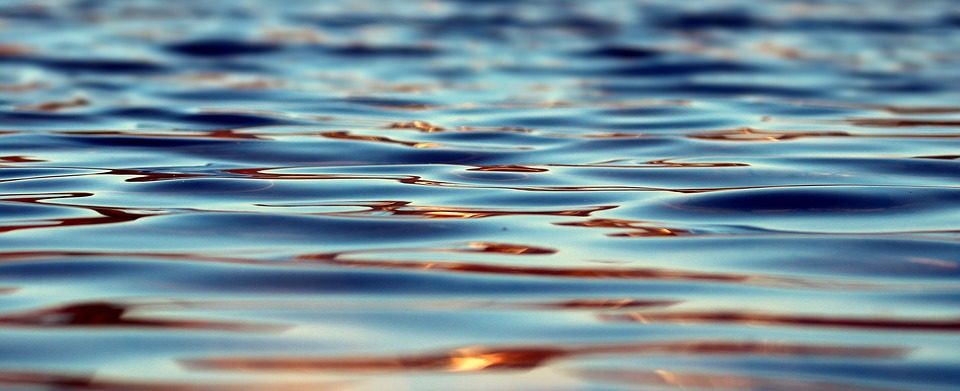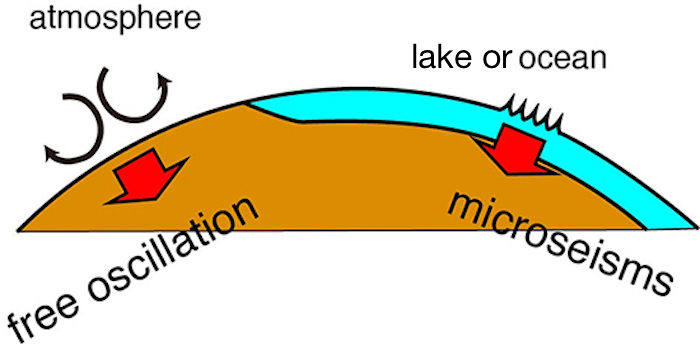
© Pixabay
Beneath the peaceful rolling waves of a lake is a rumble, imperceptible to all but seismometers, that ripples into the earth like the waves ripple along the shore.
In a study published today in the
Journal of Geophysical Research Solid Earth, scientists at the University of Utah report that these small seismic signals can aid science.
As a record of wave motion in a lake, they can reveal when a lake freezes over and when it thaws. And as a small, constant source of seismic energy in the surrounding earth, lake microseisms can shine a light on the geology surrounding a lake. "It's kind of a new phenomenon," says Keith Koper, director of the University of Utah Seismograph Stations and co-author of the study. "We don't really know how it's created."

© JAMSTEC
Seismologists have long known that
wind-driven ocean waves generate small seismic waves, called microseisms. These microseisms are generated as waves drag across the ocean floor or interact with each other. They are part of the background seismic noise in coastal areas.
"We've recently found that the waves on lakes actually generate these microseisms too," Koper says.
Lake microseisms had been previously recorded near the Great Lakes, Canada's Great Slave Lake and Utah's own Great Salt Lake. In the paper, Koper and colleagues present
additional observations from Yellowstone Lake and three lakes in China, exploring the characteristics of the respective lakes' microseisms.
Koper says the tremors are very small. "You wouldn't be able to feel 'em, that's for sure," he says. But by averaging seismic signals over a long period - six months, for example - a consistent signal emerges.
Scanning the EarthThe signal can be used to produce what Koper calls a
"CT scan of the Earth," or seismic tomography. Seismic waves travel through different geological materials at different speeds, so observing how waves change as they emanate from a source can reveal subsurface geology. Researchers can create these seismic sources with methods like a hammer on a metal plate, an explosion, or a specially outfitted truck with a vibrating plate. Lakes, Koper says, provide a natural, regular source. "It would take quite a bit of effort and work to generate this level of energy."
The area that could be explored using lake microseisms is limited to the region close to a lake, but Koper writes that lake
microseisms emanating from the Great Salt Lake might reach far enough to visualize how seismic waves would move beneath Salt Lake City, which sits on the Wasatch Fault, in a major earthquake. Likewise, Lake Tahoe microseisms could extend to Reno, Nevada, and Lake Michigan could provide microseisms to image the geology beneath the Chicago area.
Tracking ice in lakesMicroseisms can perform another function, says Aini Mokhdhari, a senior majoring in geology. Because the tremors are caused by wind-driven waves, microseisms cease when a lake freezes over in winter. They resume again when it thaws in the spring. Thus, rather than relying on satellite or eyewitness observations, lake freezing and thawing could be monitored by an autonomous seismometer.
Mokhdhari looked at microseismic data from Yellowstone Lake, a well-observed lake for which the freezing and thawing dates are known. "We compare the data we got from the seismograph to see if it's the same," she says. "So far it is." Seismological observations may not be needed at Yellowstone Lake, but could be useful for monitoring more remote lakes for long-term changes to ice cover duration. Mokhdhari will present results of her work on lake microseisms at the Fall Meeting of the American Geophysical Union, to be held Dec. 11-15 in New Orleans.
Listening to Yellowstone LakeNext summer, Mokhdhari and Koper will join colleagues in a further seismic study of Yellowstone Lake. They'll place an array of small seismometers called geophones around the perimeter of the lake, and also place an array of special waterproof seismometers on the lake floor. Additionally, they will use a buoy on the lake to measure wind and wave conditions. Their colleagues are looking to understand the hydrothermal vents in Yellowstone Lake, but Mokhdhari and Koper are much more interested in capturing microseisms from all angles.
"If we can record at the same time on land and underwater," Koper says, "we can get a better idea of how these things are generated."
Reader Comments
to our Newsletter